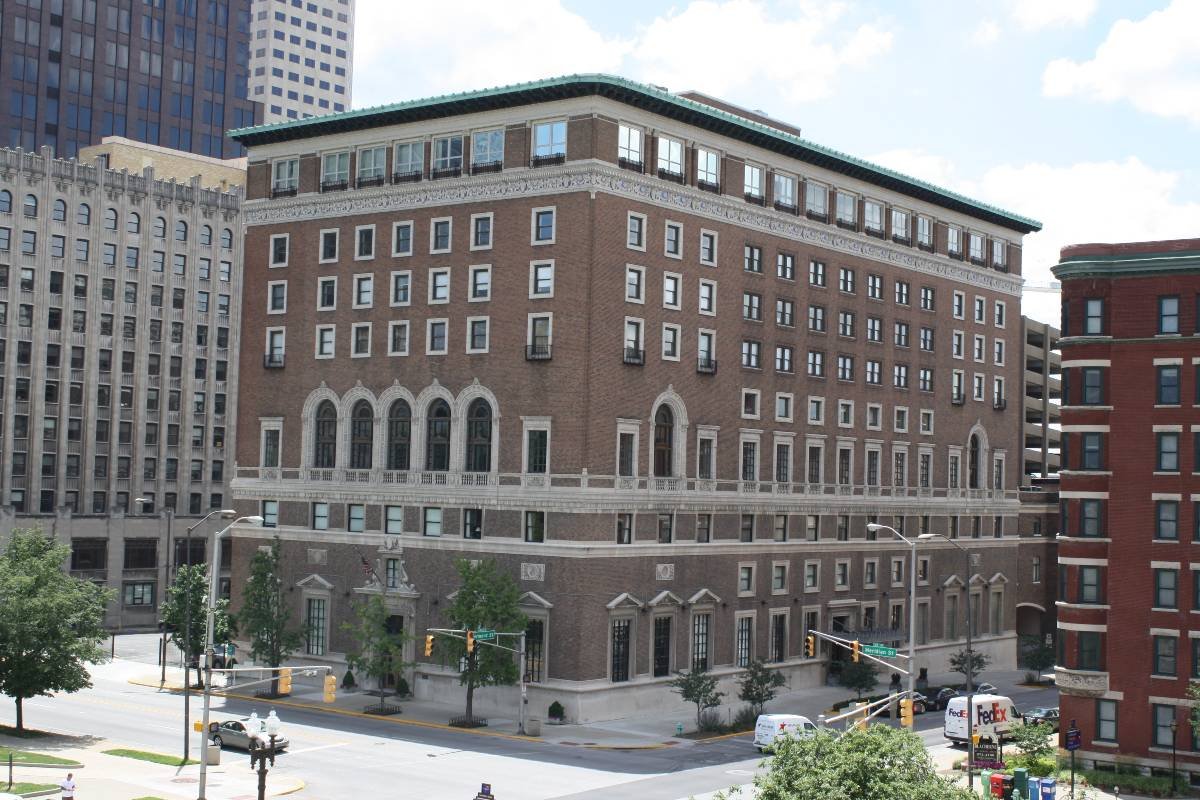10. Traditions Help Sustain Historic Clubs of City
James Glass
Column that appeared in the Indianapolis Star onIn 1930 there were 54 private clubs listed in the Indianapolis city directory. They ranged from large men’s clubs, such as the Columbia Club and the Indianapolis Athletic Club, to several chapters of the Daughters of the American Revolution, the Indianapolis Exchange Club, the Country Club of Indianapolis, Gatling Gun Club, Indianapolis Literary Club, Indianapolis Woman’s Club, the Propylaeum, Portfolio Club, Women’s Department Club, and University Club. Such clubs, like fraternal lodges, provided outlets for men and women to socialize with people of common interests and in some cases, engage in educational, artistic, or charitable projects.
Some of the private clubs of 1930 still exist today. The most well known in the downtown are undoubtedly the Columbia Club and the Athletic Club. The Columbia Club, founded by supporters of President Benjamin Harrison in 1889, continues to occupy the distinguished Collegiate Gothic-style building constructed for it in 1924 at 121 Monument Circle. Originally a city club for Republican businessmen and politicians, the club today is a place primarily where business people and members of both major political parties come to network. Inside, the grand lobby with its black walnut paneling, Travertine marble fireplace, T.C. Steele painting of Harrison, and oval marble table presented to the former president in 1893 immerse club members and their guests in the heritage of the organization. General manager Ed Albany says that the architecture of the building, its historic furnishings, and rich history help attract and keep members. He also says that diversified programming is vital for private clubs to survive and prosper today. The Columbia Club offers its members fine dining, business seminars, a health club, fashion shows, book signings, ball room dancing, and language classes.
The Indianapolis Athletic Club at 350 North Meridian Street has emphasized athletic facilities for business people downtown since its founding in 1922. Traditionally a favorite venue for Democratic civic leaders and their families, the Athletic Club has hosted many historic events and several presidents of the United States in its 80-year history. Its nine-story Italian Renaissance-style building, completed in 1924, houses a gymnasium, swimming pool, weight training room, and racquetball and squash courts for the work-out needs of its members. It also has been important for business and political networking, and its third-floor luncheon room, first floor Indianapolis 500 dining room, and Frank McHale bar have seen their share of deals and political horse-trading. On the fourth floor, a grand ballroom hosts parties and weddings. The Athletic Club, like other downtown athletic clubs across the country, has lost members in the last two decades, as some members have moved their residences and businesses to the suburbs and younger business people downtown have joined alternative work-out options, such commercial gyms and fitness centers. According to Kaye Froio, assistant to the general manager, the Athletic Club is seeking to reverse this trend by entering into an agreement to sell its hotel floors for first class condominiums and using the income to renovate the athletic facilities and attract new members.
At 970 North Delaware Street, in the former residence of automobile pioneer Daniel W. Marmon, the University Club finds tradition and history to be anchors for continued stability. Club president Gordon Wishard says that the members enjoy hospitality, fine cuisine, and camaraderie. Many families have had memberships for three or four generations, and some of the oldest names in Indianapolis society are on the rosters of the club. It was founded in 1894, and its early members included Benjamin Harrison, painter T.C. Steele, and novelist Booth Tarkington.
A downtown club with quite a different focus is the Gatling Gun Club at 709 North Illinois Street. Founded in 1919, the club’s original purpose was to stage gun drills as part of Masonic Shrine meetings. Initially the teams used actual Gatling guns, which were early machine guns invented by Dr. Richard Gatling in Indianapolis just before the Civil War. Today, the clubhouse, with its distinctive Ionic columns, hosts social functions of the Murat Shrine gun drill team.

Former Indianapolis Athletic Club, 2013. James Glass
